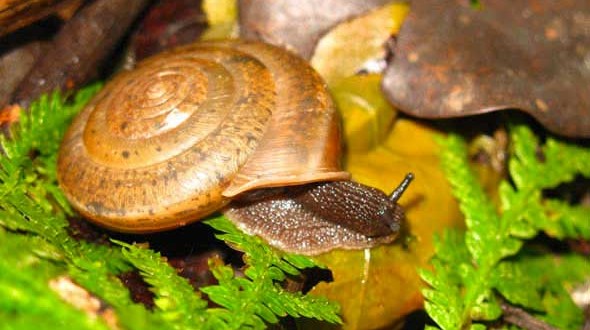Researchers in Taiwan have named a new species of land snail in honor of the fight for same-sex marriage rights, according to a report in the journal Zookeys.
Aegista subchinensis was first described in 1884 and was thought to be widely distributed in Taiwan. In 2003, one of the co-authors Dr. Yen-Chang Lee noticed that there was morphological divergence between the western and eastern populations of A. subchinensis separated by the Central Mountain Range, a major biogeographic barrier in Taiwan. Dr. Lee suggested that there might be cryptic species within the one identified as A. subchinensis at the time.
To prove Dr. Lee’s suggestion, Ph.D. candidate of Department of Life Science, National Taiwan Normal University, Chih-Wei Huang and his collaborators applied three molecular markers combined with morphological analysis to estimate the divergence and relationship among the closely related snails.
“When we examined the phylogeny from each gene,” Huang says, “it suggested that the eastern A. subchinensis was more closely related to A. vermis, a similar land snail species inhabited in Ishigaki Island, than the western A. subchinensis.”
They confirmed that what was thought to be A. subchinensis from eastern Taiwan was in fact a new species, which they named as A. diversifamilia. The name means the diverse forms of human families.
“When we were preparing the manuscript,” Dr. Lee explains, “it was a period when Taiwan and many other countries and states were struggling for the recognition of same-sex marriage rights. It reminded us that Pulmonata land snails are hermaphrodite animals, which means they have both male and female reproductive organs in single individual. They represent the diversity of sex orientation in the animal kingdom. We decided that maybe this is a good occasion to name the snail to remember the struggle for the recognition of same-sex marriage rights.”
The new species is larger in shell size and flatter in shell shape than A. subchinensis. The two species are also geographically separated by the Lanyang River, which makes this the first report suggesting that the Lanyang River is a biogeographic barrier for lowland terrestrial animals.
Agencies/Canadajournal
 Canada Journal – News of the World Articles and videos to bring you the biggest Canadian news stories from across the country every day
Canada Journal – News of the World Articles and videos to bring you the biggest Canadian news stories from across the country every day



